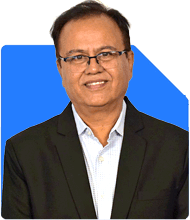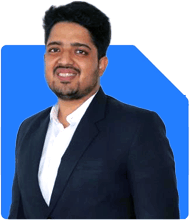My investment portfolios through SIP is as under:
Axix Mid Cap Fund: 2000
Axix ELSS Tax Saver: 3000
Edelweiss Nifty 100 Quality 30 Index: 5000
Miree Asset Large Cap: 3000
Motilal Oswal Focussed Fund: 3000
Nippon India Tax Saver ELSS: 1500
Nippon India Small Cap: 3000
Nippon India Large Cap: 3000
PGIM India Mid Cap Opportunities Fund: 3000
Quant Small Cap: 3000
UTI Aggressive Hybrid Fund: 2000
HDFC Hybrid Equity Fund: 3500
Kotak Flexi Cap Fund: 5000
ICICI Savings Fund: 3000
SBI Small Cap: 5000
SBI Magnum Constant Maturity Fund: 2000
ABSL Govt. Securities Fund: 3000
Parag Pareikh Flexi Cap Fund: 4000
I want to stay invested for another 10 years with 10% increase in SIP amount every year. I have been investing since 2019. I want to have a corpus of 3 Crore by the end of 2034. Are my portfolios ok or need some changes?
Ans: Your investment portfolio displays commendable diversification across various fund categories, which is essential for effective risk management. Let's dive deeper into the strengths and areas of improvement for your portfolio with a 10-year investment horizon.
Fund Categories
Equity Funds:
Equity funds are crucial for achieving high returns over the long term.
Your portfolio includes Mid Cap, Small Cap, and Large Cap funds, which is excellent for balancing risk and return.
These funds have the potential to outperform others in a growing market but can also exhibit higher volatility.
Hybrid Funds:
Hybrid funds are a mix of equity and debt investments, offering moderate risk and returns.
They are suitable for conservative investors who seek a balance between growth and stability.
Debt Funds:
Debt funds are generally safer than equity funds but provide lower returns.
These funds are good for ensuring stability and generating regular income.
Advantages of Your Portfolio
Diversification:
You have wisely diversified across mid-cap, small-cap, and large-cap funds, which helps spread risk and capture different market segments.
This strategy is beneficial for managing risk and achieving capital appreciation over time.
Tax Benefits:
ELSS (Equity Linked Savings Scheme) funds in your portfolio offer tax deductions under Section 80C of the Income Tax Act.
These funds help you save taxes while simultaneously growing your wealth.
Growth Potential:
Small Cap and Mid Cap funds in your portfolio have high growth potential.
Over a 10-year period, these funds can significantly appreciate in value, contributing to your goal of Rs. 3 Crore.
Balanced Approach:
Including hybrid and debt funds adds a layer of stability to your portfolio.
This ensures you have a safety net during market downturns, protecting your investment from excessive volatility.
Areas for Improvement
Fund Overlap:
Having multiple funds in the same category can lead to overlapping, reducing the overall diversification benefit.
Overlap occurs when different funds hold similar stocks, which can limit the advantages of diversification.
Expense Ratios:
Actively managed funds tend to have higher expense ratios compared to passive funds.
It's crucial to ensure that the performance of these funds justifies the higher costs.
Rebalancing:
Regularly rebalancing your portfolio is essential to maintain your desired asset allocation.
Rebalancing helps lock in profits and manage risks, ensuring your portfolio remains aligned with your financial goals.
Staying Invested for 10 Years
Market Cycles:
Markets go through cycles of highs and lows. Staying invested for 10 years allows you to ride out market volatility.
Long-term investment horizons help smooth out the impact of short-term market fluctuations.
Power of Compounding:
Compounding works best over long periods. Reinforcing your strategy of increasing SIP by 10% yearly enhances the compounding effect.
The longer you stay invested, the more significant the impact of compounding on your returns.
Consistency:
Consistent investments through SIP ensure disciplined investing. SIPs also average out the cost of investment due to rupee cost averaging.
This approach helps mitigate the impact of market volatility by spreading your investments over time.
Disadvantages of Index Funds
Passive Management:
Index funds are passively managed, aiming to replicate market performance rather than outperform it.
They do not benefit from active decision-making by fund managers, which can limit their potential for higher returns.
Lack of Flexibility:
Index funds cannot adjust to market changes quickly. They are bound to follow the index, regardless of market conditions.
This lack of flexibility can be a disadvantage during periods of market turmoil or downturns.
Potential for Lower Returns:
Actively managed funds can outperform the market, whereas index funds are designed to match the market's performance.
The potential for higher returns with actively managed funds justifies their higher fees compared to index funds.
Benefits of Actively Managed Funds
Active Decision-Making:
Fund managers actively select stocks and strategies to outperform the market. They use research, analysis, and market insights to make informed decisions.
This active approach can lead to better returns, especially in volatile or dynamic markets.
Flexibility:
Actively managed funds can adjust their portfolios based on market conditions. Fund managers can capitalize on opportunities and avoid potential pitfalls.
This flexibility is beneficial in responding to changing market environments and economic scenarios.
Higher Potential Returns:
Though they come with higher fees, actively managed funds can deliver higher returns. Fund managers' expertise and active management often justify the costs.
These funds are suitable for investors seeking growth and willing to take on higher risk for potential higher rewards.
Risks and Mitigation
Market Risk:
Equity funds are subject to market volatility. Diversification helps mitigate this risk by spreading investments across different sectors and assets.
A well-diversified portfolio can weather market fluctuations better than a concentrated one.
Credit Risk:
Debt funds carry credit risk if issuers default. Choosing high-quality debt funds minimizes this risk.
Opt for funds with high credit ratings and those investing in government securities or top-rated corporate bonds.
Liquidity Risk:
Some funds may have liquidity issues, especially during market downturns. Ensure a mix of liquid and less liquid assets for flexibility.
Having a portion of your portfolio in liquid assets ensures you can access funds when needed without incurring significant losses.
Recommendations for Portfolio Enhancement
Review Fund Performance:
Regularly review the performance of each fund in your portfolio. Ensure that each fund meets your expectations and aligns with your goals.
Replace underperforming funds with better-performing alternatives to optimize your returns.
Reduce Fund Overlap:
Assess the overlap in your portfolio and consolidate investments where necessary. This will enhance diversification and reduce redundancy.
Focus on selecting top-performing funds within each category rather than holding multiple similar funds.
Increase Allocation to High-Growth Funds:
Consider increasing your allocation to Small Cap and Mid Cap funds, which have higher growth potential over the long term.
Balance this with an adequate allocation to Large Cap and Hybrid funds to manage risk.
Monitor Expense Ratios:
Keep an eye on the expense ratios of your funds. Ensure that the higher costs of actively managed funds are justified by their performance.
Opt for funds with competitive expense ratios without compromising on quality.
Periodic Rebalancing:
Implement a periodic rebalancing strategy to maintain your desired asset allocation. This will help lock in profits and manage risks.
Rebalancing ensures that your portfolio stays aligned with your financial goals and risk tolerance.
Final Insights
Your investment strategy is robust, with a well-balanced mix of equity, hybrid, and debt funds. Increasing SIP amounts yearly by 10% is a smart move to harness the power of compounding. To achieve your Rs. 3 Crore goal, continue monitoring and rebalancing your portfolio. Consider reducing fund overlap and focusing on top-performing funds in each category. Actively managed funds provide an edge over passive index funds due to active decision-making and flexibility. Stay invested, remain consistent, and review your investments periodically.
Mutual Funds: Categories, Advantages, and Risks
Equity Mutual Funds:
Equity mutual funds invest primarily in stocks. They offer the highest potential returns among mutual funds but come with higher risk.
Categories include Large Cap, Mid Cap, and Small Cap funds. Each category has different risk and return profiles.
Hybrid Mutual Funds:
Hybrid mutual funds invest in a mix of equity and debt instruments. They provide a balanced approach to risk and return.
These funds are suitable for investors looking for moderate growth with lower risk compared to pure equity funds.
Debt Mutual Funds:
Debt mutual funds invest in fixed-income securities like bonds and government securities. They are ideal for conservative investors seeking stable returns.
These funds carry lower risk compared to equity funds but offer lower returns.
Advantages of Mutual Funds:
Diversification: Mutual funds provide diversification by investing in a wide range of securities. This reduces risk compared to investing in individual stocks or bonds.
Professional Management: Funds are managed by professional fund managers who use their expertise to make investment decisions.
Liquidity: Mutual funds are highly liquid. Investors can easily buy and sell fund units at the prevailing NAV.
Systematic Investment Plans (SIPs): SIPs allow investors to invest a fixed amount regularly. This promotes disciplined investing and helps in averaging the cost of investment.
Tax Benefits: Certain mutual funds, like ELSS, offer tax benefits under Section 80C of the Income Tax Act.
Risks of Mutual Funds:
Market Risk: The value of mutual fund investments can fluctuate based on market conditions. Equity funds are particularly susceptible to market volatility.
Credit Risk: Debt funds carry the risk of issuers defaulting on their obligations. Opting for funds with high credit ratings can mitigate this risk.
Interest Rate Risk: Changes in interest rates can affect the value of debt fund investments. When interest rates rise, the value of existing bonds typically falls.
Liquidity Risk: Some mutual funds may face liquidity issues, making it difficult to sell holdings without incurring losses.
Power of Compounding:
The power of compounding is a key advantage of mutual fund investments. It refers to earning returns on both the initial principal and the accumulated returns over time.
The longer you stay invested, the greater the compounding effect. This is why long-term investing is essential for maximizing returns.
Disadvantages of Direct Funds
Direct Funds:
Direct mutual funds are those purchased directly from the fund house without involving intermediaries like mutual fund distributors (MFDs).
They have lower expense ratios compared to regular funds because they do not include distributor commissions.
Disadvantages:
Lack of Guidance: Investing in direct funds means you do not get the guidance and expertise of a mutual fund distributor or certified financial planner. This can lead to suboptimal investment choices.
Time-Consuming: Managing and monitoring direct investments require significant time and effort. Not all investors have the knowledge or time to do this effectively.
Risk of Mismanagement: Without professional advice, investors may make mistakes like improper asset allocation, inadequate diversification, or emotional decision-making.
Benefits of Regular Funds through MFD with CFP Credential:
Expert Advice: Investing through a mutual fund distributor with CFP credentials provides access to expert advice and professional management.
Customized Portfolio: MFDs with CFP credentials can help create a customized investment portfolio tailored to your financial goals and risk tolerance.
Ongoing Support: They offer ongoing support and portfolio reviews to ensure your investments remain aligned with your objectives.
Peace of Mind: Having a professional manage your investments provides peace of mind, knowing your portfolio is in capable hands.
Final Insights
Your current investment strategy is solid and well-balanced. Continuing to invest through SIPs with a 10% annual increase is a smart approach to achieving your financial goals. Regularly review and rebalance your portfolio to ensure it stays aligned with your objectives. Consider reducing fund overlap and focusing on top-performing funds. Actively managed funds offer potential for higher returns through expert decision-making. Stay consistent with your investments and leverage the power of compounding for long-term wealth creation.
Best Regards,
K. Ramalingam, MBA, CFP
Chief Financial Planner
www.holisticinvestment.in




























